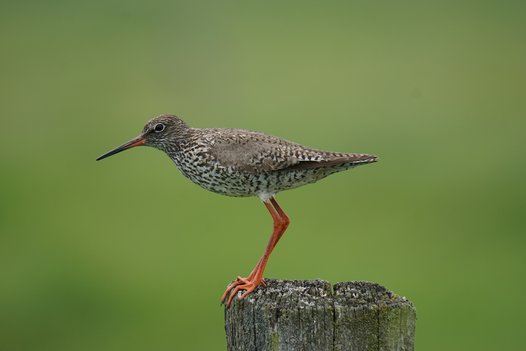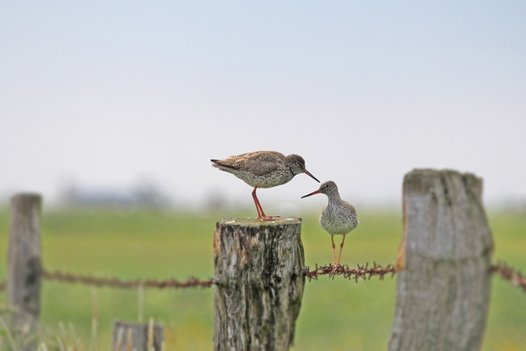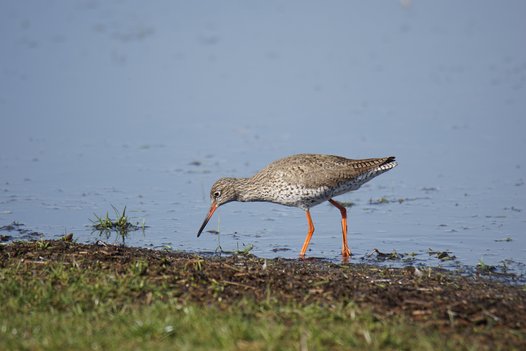Meadow birds
Common Redshank
Ubiquitous at the coast
The Redshank owes its name to its striking legs. Apart from that, the red and black beak and the white trailing edge of the wings are also distinctive features. These slender and diurnal meadow birds move swiftly on their red shanks.
Redshanks forage by probing the soil or by picking up food from the ground. During the breeding season, they have small territories which they defend against intruders, but outside of the breeding season they live socially.
Profile
| Scientific name | Tringa totanus |
| Call | Tew … hee … hee |
| Food | Mostly insects, worms and molluscs |
| In breeding grounds | March to July |
| Clutch size | 3–5, usually 4 |
| Broods per year | 1 |
| Population trend in Europe | Declining |
More information
Find out more about the Common Redshank.


